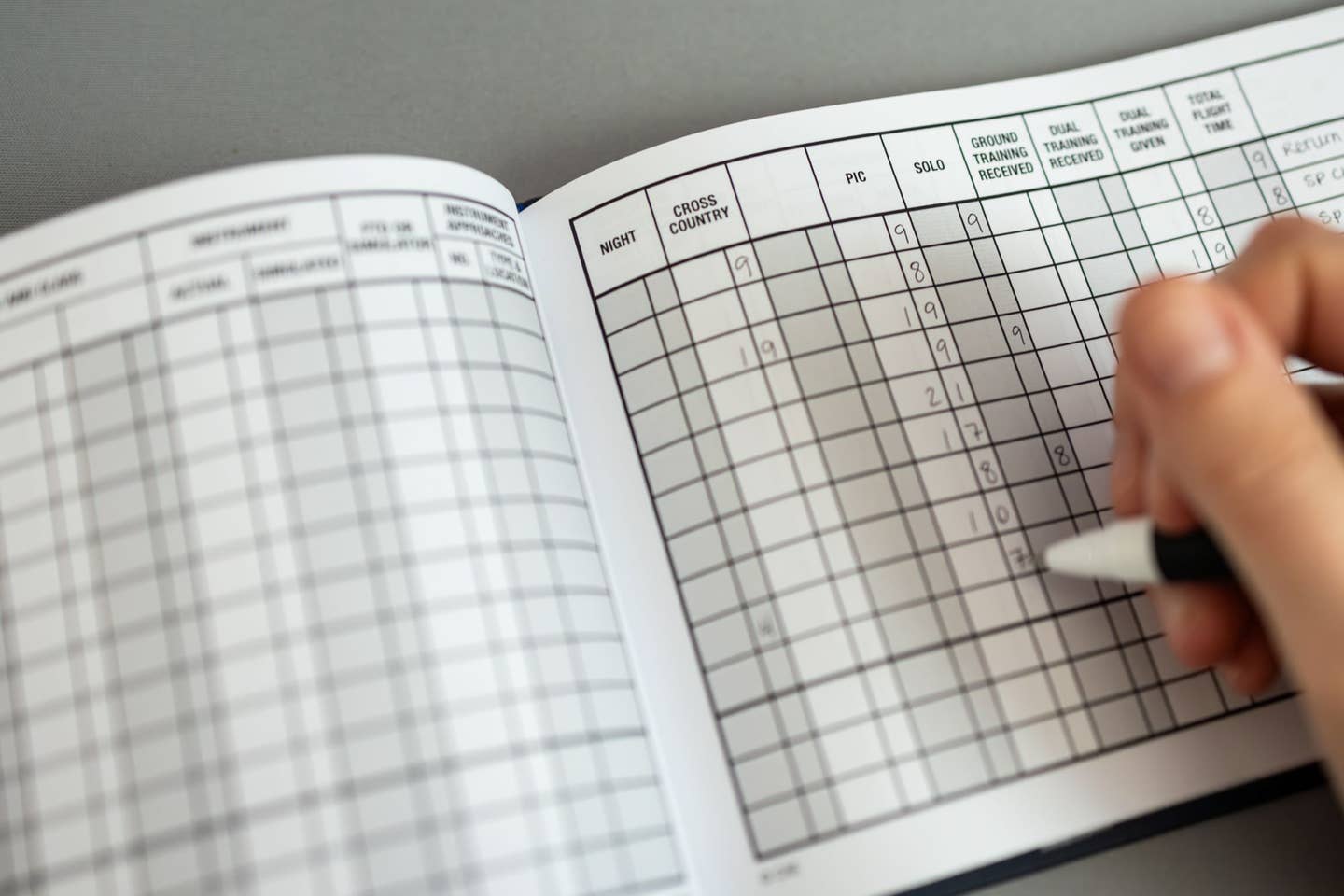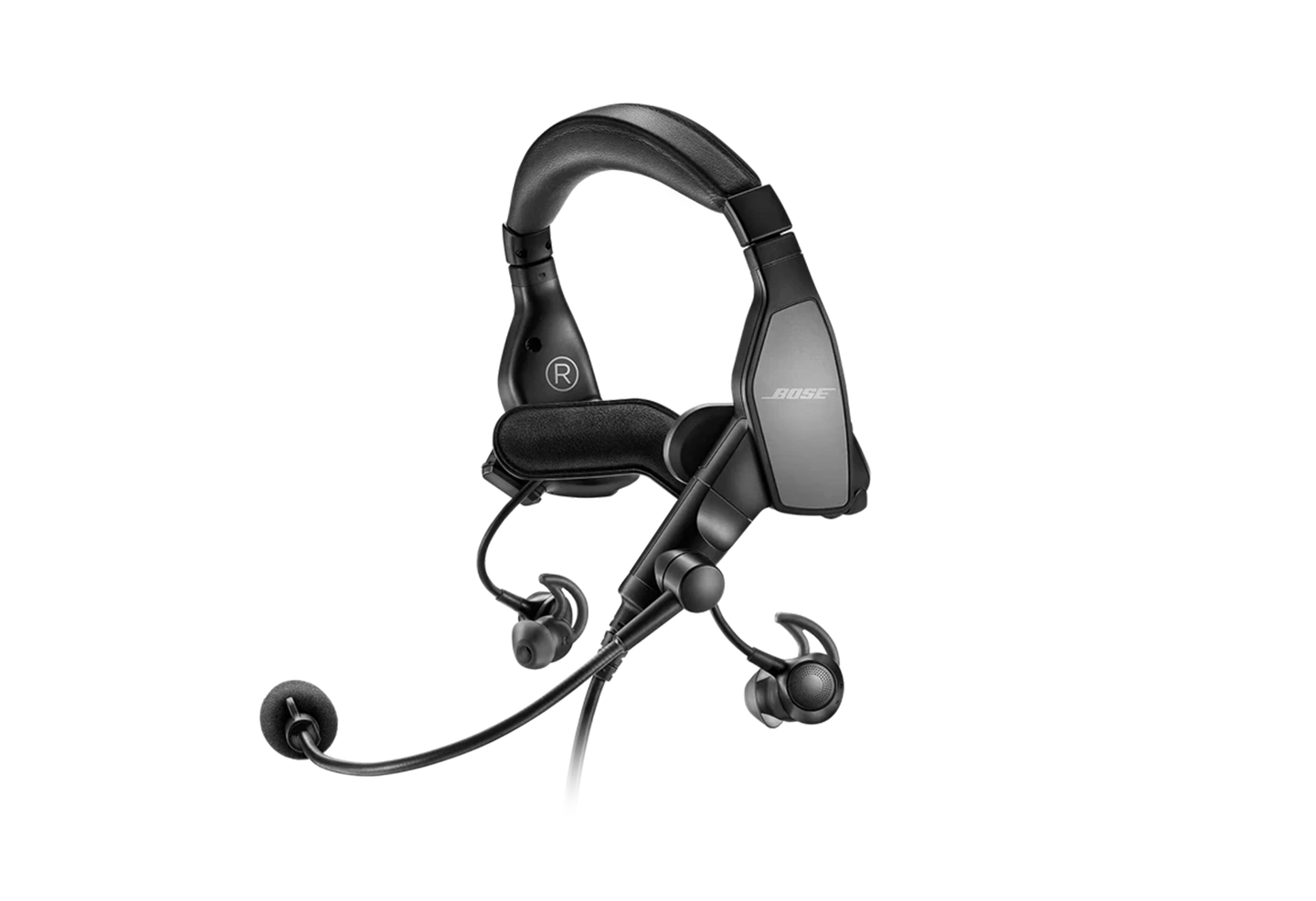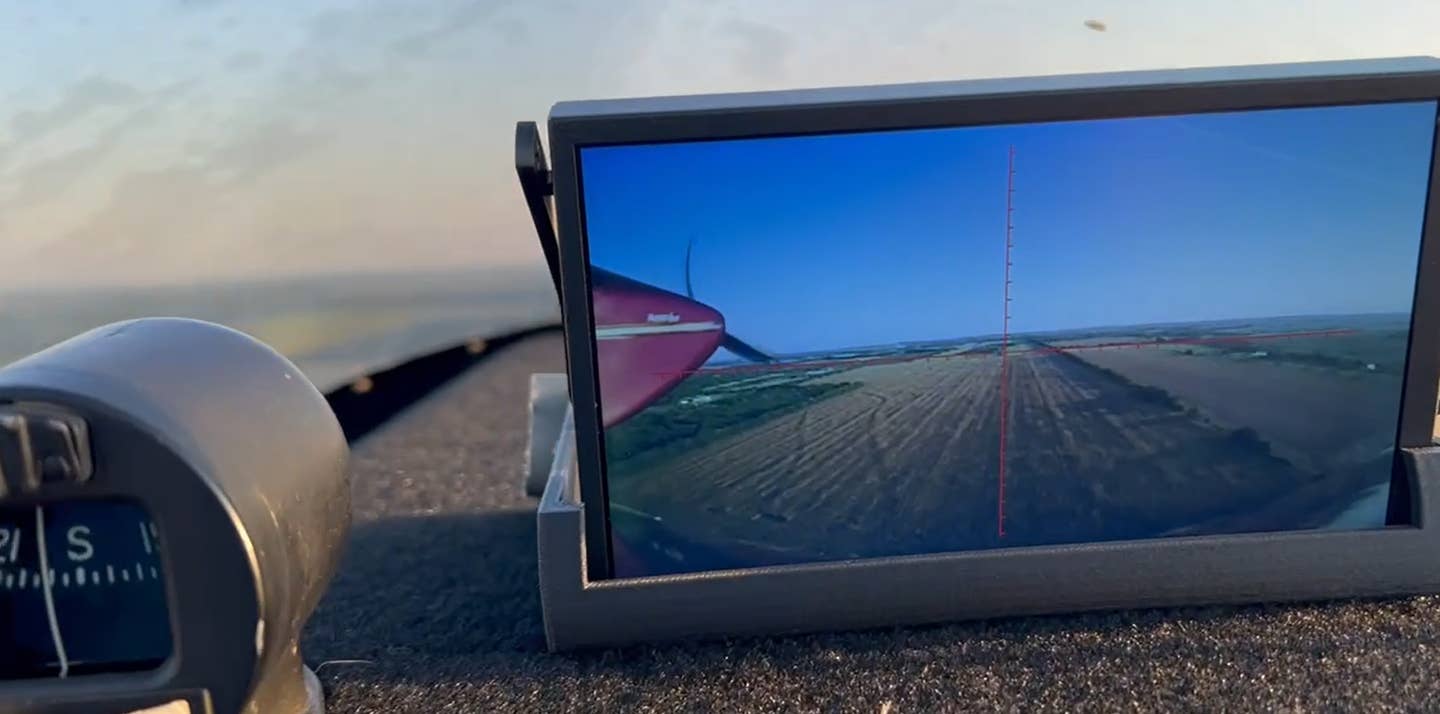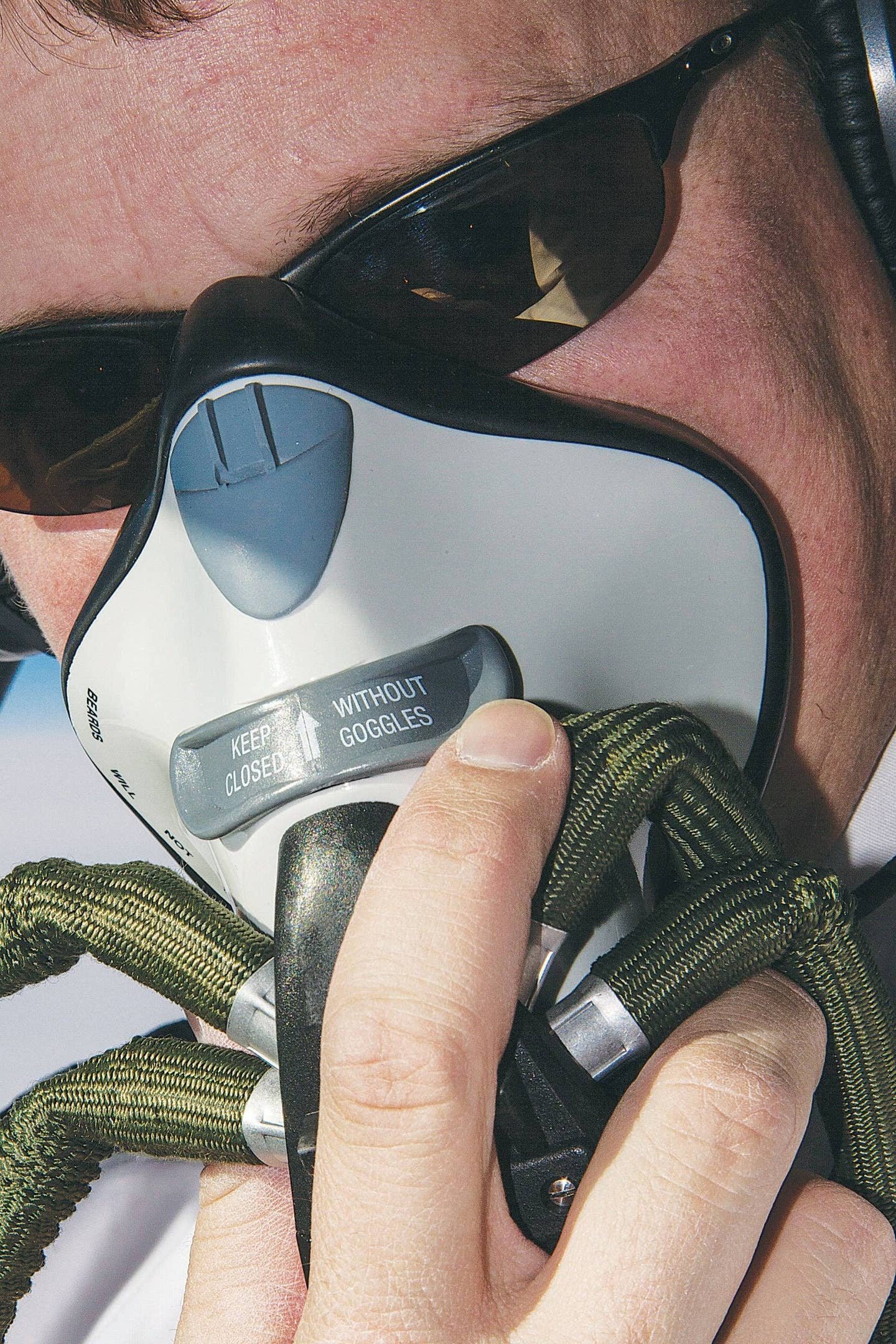Paper vs. Electronic Logbooks: Pros and Cons
Find out the best flight logbook for you—paper, digital, or a combination.

You may consider using more than one type or brand of logbook to diversify your data storage. [Photo by Carly Chamerlik | Flying Magazine]
Logging flight time and experience is an essential part of becoming a pilot. Logbooks, both paper and electronic, help pilots track and organize their hours and endorsements for future reference.
Deciding which type of logbook to use is important to do early on in your flying career, if possible. The more hours a pilot accumulates, the more work it will be to transfer all of that information into a new format. Before choosing a logbook, consider these pros and cons to determine which one is right for you.
Why Are Pilot Logbooks Important?
Digital and electronic logbooks are used to track flight time and provide proof of a pilot's qualifications.
Pilots are required to keep track of their flight hours and aeronautical experience when working toward a new certificate or rating. Logbooks are also used to track currency for existing certificates and ratings, such as an instrument rating or night currency. Using an official pilot logbook helps keep all of that information organized and easily accessible.
Logbook entries include information about the flight and the pilot's activity. A standard entry includes the date, conditions of the flight, type of flight experience gained, and total flight time. Flight conditions could be day or night flying, IFR , or simulated IFR.
Examples of flight experience a pilot could log are PIC, solo time, or instruction received.
Pilot logbooks serve as documented proof of a pilot's training. Keeping neat, accurate records will make your life easier as you advance through your training.
Paper Logbook: Advantages and Disadvantages
A paper logbook is a physical book, usually bound with a hardcover.
Pilots record their flight times and endorsements by hand and manually calculate their flight hours. Paper logbooks are the more traditional method of pilot recordkeeping, and many pilots prefer the tangibility of documenting on paper.
Pros of Paper Logbooks
- Tangible and familiar: There's something about putting pen to paper. There's no real learning curve and nothing overly complex about filling out a physical logbook.
- No reliance on technology: As long as you have your book in hand, you can access and update your hours. There's no subscription fee or internet connection required.
- Accepted universally: You'd be hard pressed to find a school, scholarship, or job application that doesn't accept pictures of physical logbook pages as proof of experience.
Cons of Paper Logbooks
- Limited space: There are only so many pages in a paper logbook. Eventually, it will fill up and you'll need to get a new one. Every logbook filled is another one you need to keep safe.
- Vulnerability to damage or loss: Paper logbooks can be easily ruined by spills, tears, or wear over time. They also can be lost or stolen.
- Human error: Tallying up hours by hand, page after page, will almost inevitably lead to an error at some point. Pages can be totaled incorrectly and types of flight time get missed. Duplicate logs or regular audits may help catch and prevent errors but are not foolproof.
- Difficulty in data analysis: Tallying up hours in a column is one thing, but going back through months or years of data to add up specific types of time is another. When it comes time to apply for a new rating or certificate, the process of proving eligibility is time-consuming with a paper log.
Popular Written Logbook Options
Our top picks for paper logbooks have a hardcover, plenty of pages, and fill-in-the-blank endorsements.
- Sporty's Pilot's Flight Logbook and Record
- King Pilot Logbook
- ASA Standard Pilot Logbook
- Jeppesen Professional Pilot Logbook
Electronic Pilot Logbook: Advantages and Disadvantages
An electronic pilot logbook is a digital record of a pilot's flight experience.
It contains virtually the same information as a paper logbook but is housed online or on a digital device. Digital pilot logbooks have become increasingly popular as a backup or replacement for paper logbooks.
Pros of Electronic Logbooks
- Automatic calculations and summaries: With an electronic pilot logbook, there are no manual calculations needed. The software is designed to total your flight hours automatically.
- Easy data entry and editing: If a flight is logged incorrectly, it's easy to go back and make adjustments. Corrections on a paper log can get messy, especially if they are not caught until multiple pages later.
- Advanced analysis and reporting features: Pulling up data in a specific category takes only a click or two. Most logbook software also includes currency tracking and reminders.
- Cloud storage and backup: One of the biggest advantages of digital logbooks over paper is recoverability. Electronic logs are usually hosted on software that backs up copies of your logbook to the cloud. Even if your tablet or phone is lost or broken, your data is still safe and can be restored on another device.
Cons of Electronic Logbooks
- Initial learning curve: As with any new software or tech, it may take a little time to become familiar with an electronic logbook. Figuring out all of the new-to-you functions might not be immediately intuitive.
- Dependence on technology: Logbooks need to be on hand and accessible when flying certain types of operations. If your logbook is housed online, you'll need to make sure your tablet or phone is charged so you can access it.
- Potential synchronization issues: Apps don't always integrate with other apps and devices as easily as we hope. Tech issues are a possible complication of an electronic pilot log.
- Cost of software subscriptions: Keeping up with a recurring subscription fee is definitely more expensive than buying a paper logbook one time. If low cost is a priority, the options for digital logbooks in that category are certainly limited.
Popular Digital Logbook Options
Our favorite digital logbooks come at a variety of price points with all different levels of capability.
- ForeFlight - As a bonus suggestion, try out Sporty's Flying with ForeFlight training course.
- Garmin Aera 760 GPS
- MyFlightBook
Which Flight Log Type Is Best?
- During flight planning: When planning a flight or flying schedule, you might want to review various hour totals for currency. For fast and accurate totals, an electronic logbook would be the better choice.
- In the cockpit: While in the air, internet access is limited. A digital logbook may not load or update while flying, so a paper logbook would be better for inflight reference.
- During aircraft inspections: Ramp inspections may happen suddenly and without notice. While logbooks are not a required item to present during a ramp check, it’s best to have one accessible if possible for a smooth inspection process. If you have a dead iPad and can't access your logbook, you might find yourself in a bad position with the FAA. A paper logbook is potentially the safer option to have on hand in this scenario.
- For career advancement: If you plan to fly professionally, an electronic logbook is the most efficient option. When you apply for pilot jobs, airlines and other potential employers will request detailed reports on your hours. Digital logbook software makes it easy to pull up-to-date, comprehensive reports on your flight hours.
Find a Flight Logbook That Works for You
The best flight logbook for you may be paper, digital, or a combination. Go with your gut and start with whichever type you're leaning toward.
You can always transfer your data to a different format later if you change your mind. It's also a great idea to have a backup log. You may consider using more than one type or brand to diversify your data storage.
A flight logbook is an essential part of your preflight planning and equipment. Make sure to always be fully prepared and know what you need preflight for flight safety.
FAQ
Are electronic pilot logbooks legal?
Yes, electronic pilot logbooks are legal and just as valid as paper logbooks. As long as all required information is documented, flight hours can be logged manually or electronically.
What digital logbook do airline pilots use?
There isn't one software that is standard among all airline pilots, but many airline pilots like LogTen Pro for its advanced features and reporting.
What is the best pilot logbook for iOS?
For hobby pilots, ForeFlight's logbook feature is more than sufficient and is iOS-friendly.

Sign-up for newsletters & special offers!
Get the latest FLYING stories & special offers delivered directly to your inbox






